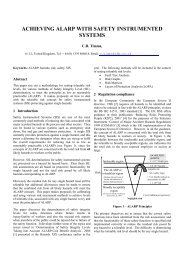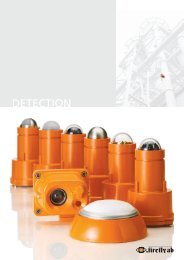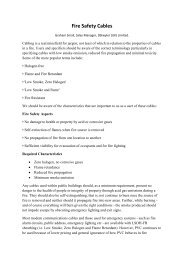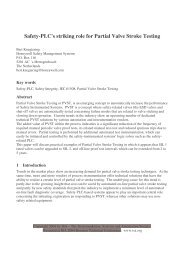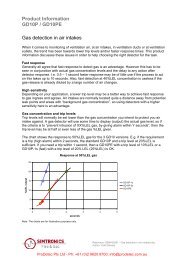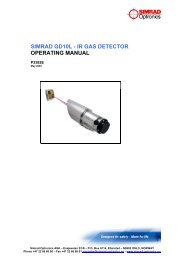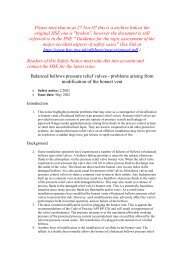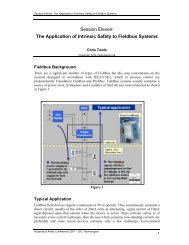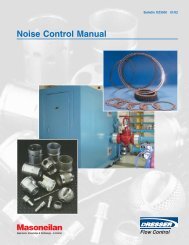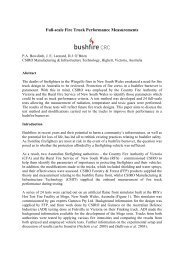Safety Considerations Guide for Triconex General ... - ICEWeb
Safety Considerations Guide for Triconex General ... - ICEWeb
Safety Considerations Guide for Triconex General ... - ICEWeb
Create successful ePaper yourself
Turn your PDF publications into a flip-book with our unique Google optimized e-Paper software.
22 Chapter 2 Application <strong>Guide</strong>lines<br />
• The receiving program must monitor the status of the TR_URCV and<br />
TR_PORT_STATUS functions to determine if there is a network problem that requires<br />
operator intervention.<br />
For in<strong>for</strong>mation on data transfer time and examples of how to use Peer-to-Peer functions to<br />
transfer safety-critical data, see Appendix A, <strong>Triconex</strong> Peer-to-Peer Communication.<br />
SIL2 <strong>Guide</strong>lines<br />
For SIL2 applications, these guidelines should be followed:<br />
• If non-approved modules are used, the inputs and outputs should be checked to verify<br />
that they do not affect safety-critical functions of the controller.<br />
• Two modes control write operations from external hosts:<br />
— Remote Mode: When true, external hosts, such as Modbus master, DCS, etc., can<br />
write to aliased variables in the controller. When false, writes are prohibited.<br />
— Program Mode: When true, TriStation 1131 software can make changes including<br />
operations that modify the behavior of the currently running application. For<br />
example, Download All, Download Change, declaring variables,<br />
enabling/disabling variables, changing values of variables and scan time, etc.<br />
Remote mode and program mode are independent of each other. In safety applications,<br />
operation in these modes is not recommended. In other words, write operations to the<br />
controller from external hosts should be prohibited. If remote mode or program mode<br />
becomes true, the application should include the following safeguards:<br />
— When remote mode is true, the application should turn on an alarm. For example, if<br />
using the SYS_SHUTDOWN function block, the ALARM_REMOTE_ACCESS<br />
output could be used. Verify that aliased variables adhere to the guidelines<br />
described in Maintenance Overrides on page 24.<br />
— When program mode is true, the application should turn on an alarm. For example,<br />
if using the SYS_SHUTDOWN function block, the<br />
ALARM_PROGRAMMING_PERMITTED output could be used.<br />
• Wiring and grounding procedures outlined in the Planning and Installation <strong>Guide</strong> <strong>for</strong><br />
<strong>Triconex</strong> <strong>General</strong> Purpose v2 Systems should be followed.<br />
• Maintenance instructions outlined in the Planning and Installation <strong>Guide</strong> <strong>for</strong> <strong>Triconex</strong><br />
<strong>General</strong> Purpose v2 Systems should be followed.<br />
• The operating time restrictions in this table should be followed.<br />
Operating Mode<br />
SIL 1<br />
Operating Time<br />
SIL 2<br />
Operating Time<br />
TMR Mode Continuous Continuous<br />
Dual Mode Continuous Continuous<br />
Single Mode Continuous Industry accepted MTTR<br />
<strong>Safety</strong> <strong>Considerations</strong> <strong>Guide</strong> <strong>for</strong> <strong>Triconex</strong> <strong>General</strong> Purpose v2 Systems



